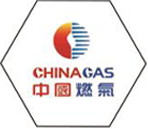
Nov . 12, 2024 06:56
Back to list
relief valve
Understanding Relief Valves Importance, Types, and Applications
Relief valves are essential components in various industrial systems, ensuring safety and operational efficiency. They are mechanical devices designed to prevent overpressure in systems by releasing excess pressure from a vessel or pipeline. This critical function protects equipment from damage, maintains product quality, and ensures safe operation.
Importance of Relief Valves
The primary purpose of a relief valve is to safeguard equipment and personnel. In industries where gases or liquids are stored under pressure, such as oil and gas, chemical manufacturing, and power generation, the consequences of overpressure can be catastrophic. An unexpected surge in pressure can lead to equipment failures, explosions, and even loss of life. Relief valves act as a fail-safe mechanism, automatically opening when the pressure exceeds a predetermined limit, thereby preventing dangerous situations.
Additionally, relief valves help maintain system efficiency. By releasing excess pressure, they allow systems to operate within their design specifications. This not only extends the life of equipment but also reduces maintenance costs and enhances productivity. In many cases, regulatory standards require the installation of relief valves in pressure-containing systems, further emphasizing their importance.
Types of Relief Valves
There are several types of relief valves, each designed for specific applications and working conditions. The most common types include
1. Spring-Loaded Relief Valves This type of valve uses a spring mechanism to hold the valve seat closed against the pressure of the fluid. When the pressure exceeds the set limit, the spring compresses, allowing the valve to open and relieve excess pressure. Spring-loaded valves are widely used due to their simplicity and reliability.
2. Pilot-Operated Relief Valves These valves use a pilot system that senses the pressure and regulates the main valve's operation. They are suitable for systems with high flow rates and can provide more precise control over pressure release.
3. Ball or Disc-Type Relief Valves These valves use a ball or disc to seal the valve when not in operation. They are typically used for larger pipelines where swift pressure relief is required. The design minimizes the backpressure and allows for rapid discharge.
relief valve

4. Electric or Pneumatic Actuated Valves For applications requiring automation, electric or pneumatic actuators can be used to control the opening and closing of relief valves. This integration enhances response time and precision in pressure management.
Applications of Relief Valves
Relief valves find applications across various industries, such as
- Oil and Gas In extraction and refining processes, relief valves are crucial for managing the high pressures associated with natural gas and crude oil.
- Chemical Industry Reactors often operate under pressure, and relief valves help prevent overpressure situations that could lead to chemical spills or reactions.
- Power Generation Steam and gas turbines rely on relief valves to maintain the necessary pressure levels and protect against system failures.
- Water Treatment Facilities In water treatment, pressure relief valves are used to maintain safe operating levels in tanks and pipelines, ensuring the plant operates smoothly.
Conclusion
In summary, relief valves are vital safety devices in various industries, preventing the detrimental effects of overpressure. Their ability to respond automatically to pressure changes makes them indispensable in protecting both equipment and human lives. With various types available, each tailored for specific applications, relief valves play a crucial role in maintaining operational efficiency and safety in modern industrial systems. Understanding their operation and importance is essential for professionals involved in system design, maintenance, and safety management. Keeping these devices well-maintained is key to ensuring their effective performance and extending the life of the systems they protect.
Next:
Latest news
-
Safety Valve Spring-Loaded Design Overpressure ProtectionNewsJul.25,2025
-
Precision Voltage Regulator AC5 Accuracy Grade PerformanceNewsJul.25,2025
-
Natural Gas Pressure Regulating Skid Industrial Pipeline ApplicationsNewsJul.25,2025
-
Natural Gas Filter Stainless Steel Mesh Element DesignNewsJul.25,2025
-
Gas Pressure Regulator Valve Direct-Acting Spring-Loaded DesignNewsJul.25,2025
-
Decompression Equipment Multi-Stage Heat Exchange System DesignNewsJul.25,2025

